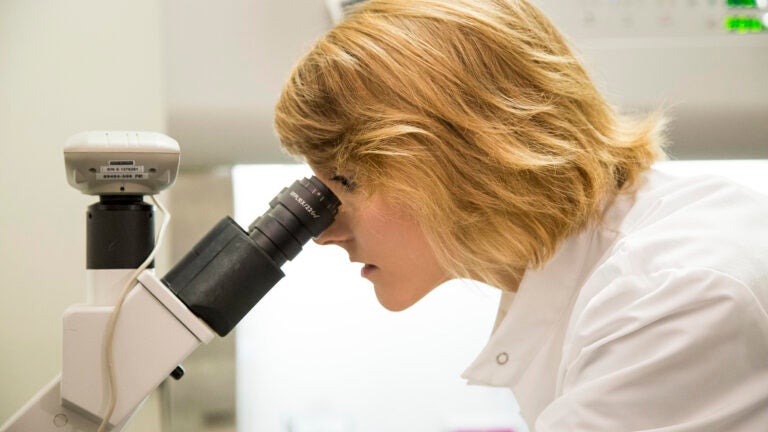
PhD student finds surprising secret to detecting staph infections earlier
Samantha McBirney discovered a flaw in research on “superbugs”; Staph almost cost NFL superstar J.J. Watt his leg — or worse
NFL superstars J.J. Watt, Tom Brady and recently retired Peyton Manning have more than football in common. Their careers (and potentially their lives) could’ve come to a premature end thanks to an unexpected threat: a staph infection.
Staph — short for Staphylococcus aureus — has hit the news again this week after Watt disclosed that he nearly lost his leg last year to the bacteria. It often spreads among athletes because of their skin-to-skin contact and their time in locker rooms. But even when the bacterium isn’t making headlines, hospitals know it all too well.
Staph and another microbe, Pseudomonas aeruginosa, are two of the deadliest bacteria responsible for bloodstream infections that arise in people fitted with catheters, like hospital patients. Sometimes these infections can grow out of control before doctors can successfully diagnose and treat them. That’s where research from USC Viterbi School of Engineering may make a huge difference.
USC Viterbi doctoral candidate Samantha McBirney wants to help doctors detect these infections earlier and better.
As McBirney explains, patients in hospital intensive care units are most susceptible to these bacterial infections. That’s because they often have several catheters inserted in their bodies to deliver intravenous fluids, potentially allowing bacteria to enter. Unfortunately, staph often grows resistant to antibiotics. About 25 percent of ICU patients with these infections die.
McBirney and her research lab adviser, Andrea Armani, associate professor of chemical engineering and material science at USC Viterbi, developed an algorithm to figure out the best way to detect these bacteria early. And they didn’t need to invent any new instruments to do it.
An ill-suited method
When McBirney set out to study how the two “superbugs” grow, she used a conventional bacteria-detecting instrument — a particular type of spectrophotometer (known as OD600). But using that method produced inconsistent and unreliable results, especially with Staphylococcus.
McBirney shifted her focus toward finding a more robust method to detect the bacteria. In her quest, she discovered the main reason for the poor results: the detection instrument itself, a problem that had been overlooked for decades.
Spectrophotometers work by measuring the light that’s scattered from whatever is being analyzed. But it turns out that the OD600 spectrophotometer that’s commonly used has an unfortunate hangup: It measures a wavelength of light that scatters poorly from Staph bacteria.
Staphylococcus would be undetectable using that equipment, unless the superbug has grown to dangerous proportions, McBirney said.
Math to the rescue
McBirney turned to another detection instrument called a Uv-Vis spectrophotometer. That enabled her to see bacteria-scattered light from a wide range of wavelengths. In turn, she used data from her experiments to create an algorithm — developed with Armani — to calculate the best wavelengths to detect each superbug.
In the long term, McBirney hopes the algorithm will be used to figure out the best light wavelengths to detect more types of bacteria. Ideally, researchers would be able to study each bacterium using its particular wavelength, which would be matched to the appropriate detection instruments.
“We’re hoping this new approach gets adopted by research labs, which should be easy given the instrumentation used is already present in most lab settings,” McBirney said. “Hopefully, this information will allow us to more accurately characterize the growth patterns of bacteria. We’ll then be able to start working toward better treatments for these infections and, fingers crossed, cures.”
The research, which was published in Biomedical Optics Express in September, was supported primarily by the Office of Naval Research and a graduate fellowship from the Alfred Mann Institute.
